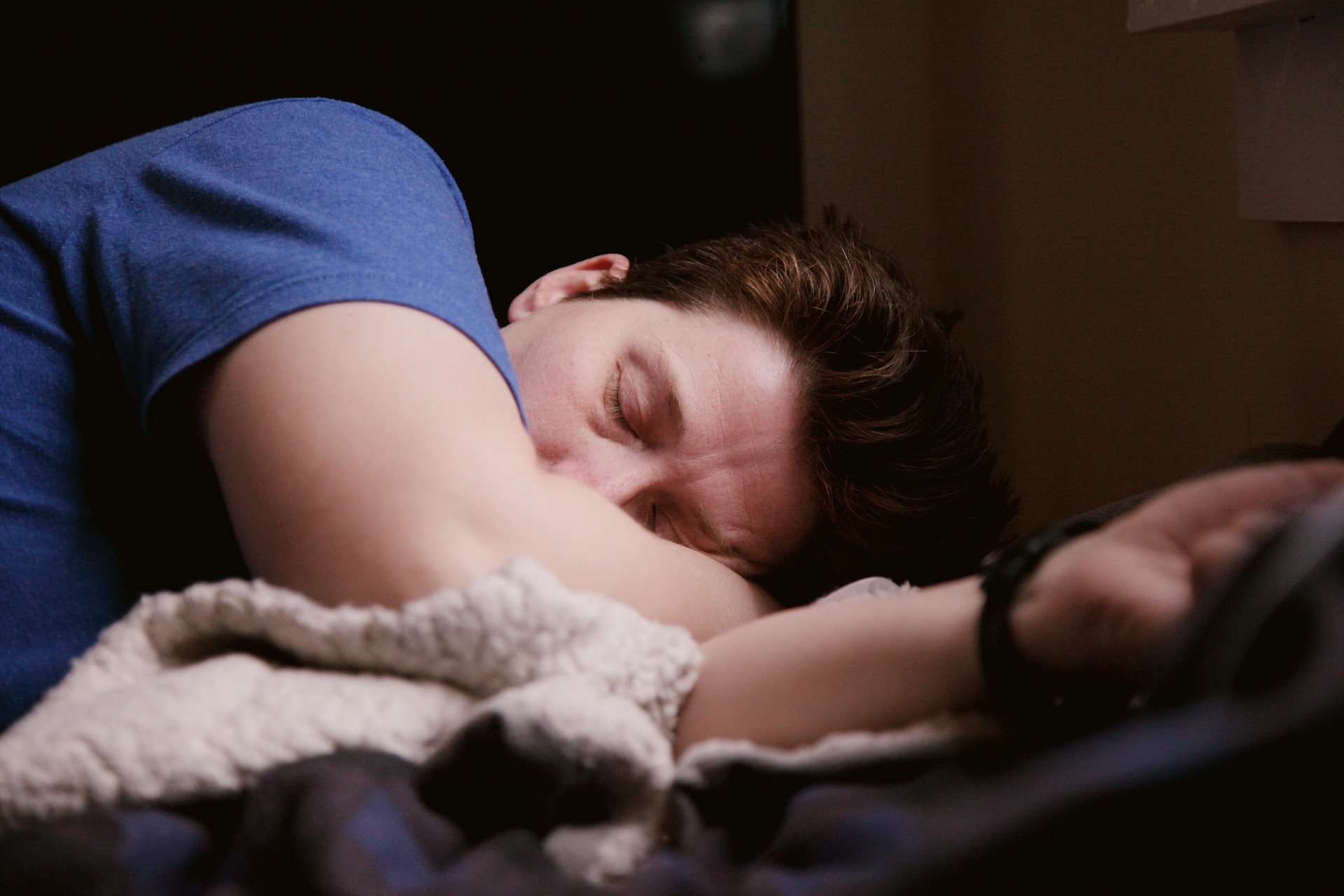
Did you know that millions of people across the globe have some form of sleep apnea? This condition causes interruptions in breathing during slumber, which can result in disrupted sleep patterns and a range of health issues. Luckily, sleep medicine can help.
Start your journey toward better sleep with Dr. Timothy Mickiewicz. Our trusted and experienced sleep doctor has simple solutions that can make a meaningful impact on your overall health and well-being. Get started with our dentist in Sacramento, CA, today by calling (916) 469-9178!
There are two primary types of sleep apnea: central sleep apnea (CSA) and obstructive sleep apnea (OSA). Understanding the differences between these two conditions (as well as how to identify and treat them) is crucial for individuals and healthcare professionals alike. In this blog, we explore CSA vs.OSA and discuss suitable treatments for each.
Central Sleep Apnea (CSA)
CSA is a less common type of sleep apnea, accounting for about 10% of all sleep apnea cases. Unlike obstructive sleep apnea (which is primarily caused by physical blockages in the airway), CSA occurs when the brain fails to send proper signals to the muscles responsible for controlling breathing.
This jumbled communication between the brain and body results in a lack of effort to breathe, leading to pauses in breathing during sleep. CSA often goes hand-in-hand with other medical conditions, such as heart failure and certain neurological disorders.
Identifying Central Sleep Apnea
There are several ways to identify this sleep condition, such as:
Recognizing Symptoms
CSA symptoms may include:
- Excessive daytime sleepiness
- Frequent awakenings during the night
- Difficulty concentrating during the day
However, these symptoms can overlap with OSA, making a sleep study critical for differentiation.
Polysomnography (Sleep Study)
During a sleep study, specialized instruments monitor and measure various physiological parameters during slumber. This test can detect the absence of respiratory effort and is essential for an accurate diagnosis.
Examining Medical History
Patients with underlying medical conditions (such as heart failure or certain neurological disorders) are at a higher risk of developing CSA. A comprehensive medical history can help identify these risk factors.
Evaluation by a Specialist
Sleep medicine physicians and pulmonologists are experts who can accurately diagnose and treat CSA. A thorough evaluation by these professionals is crucial.
Treating Central Sleep Apnea
The treatment of CSA typically revolves around addressing the underlying medical conditions that contribute to the disorder. Some common treatment options include:
Treating Underlying Health Conditions
Managing conditions like heart failure, kidney disease, and neurological disorders can alleviate CSA symptoms. This may involve medications, lifestyle changes, or other medical interventions.
Adaptive Servo-Ventilation (ASV)
Experts design ASV devices to treat CSA by adjusting airway pressure based on a patient’s unique breathing patterns. These devices include BiPAP (bi-level positive airway pressure) machines, which are effective in stabilizing respiration during sleep.
Oxygen Therapy
In some cases, supplemental oxygen may be prescribed to help maintain adequate oxygen levels in the blood, especially for those with associated hypoxemia.
Lifestyle Modifications
Adopting a healthy lifestyle that includes regular exercise, weight management, and avoiding alcohol and sedatives can improve CSA symptoms.
Obstructive Sleep Apnea (OSA)
OSA occurs when the soft tissues of the throat get too relaxed during sleep, which blocks the natural flow of air. These repeated episodes of airflow obstruction result in oxygen desaturation, fragmented sleep, and a host of related symptoms.
Obstructive sleep apnea (OSA) is the more prevalent type of sleep apnea, accounting for approximately 90% of cases.
Identifying Obstructive Sleep Apnea
There are plenty of ways to identify this condition, such as:
Understanding Common Symptoms
Common symptoms of OSA include:
- Loud snoring
- Excessive daytime sleepiness
- Choking or gasping for breath during sleep
- Frequent awakenings
Bed partners may also observe breathing pauses that can last for several seconds.
Polysomnography (Sleep Study)
Similar to CSA, polysomnography is the primary method for diagnosing OSA. It measures various parameters, including airflow, oxygen levels, and brain activity during sleep.
Physical Examination
A physical examination by a healthcare professional may reveal anatomical factors (such as a narrow airway, enlarged tonsils, or a deviated septum) that contribute to OSA.
Home Sleep Apnea Testing
In some cases, healthcare providers may recommend home sleep apnea testing as a more convenient and cost-effective alternative to polysomnography. Doctors may recommend this, especially for individuals with a high likelihood of OSA.
Treating Obstructive Sleep Apnea
The treatment of OSA aims to alleviate airway obstruction during sleep and improve the quality of breathing. Common treatment options for OSA include:
Continuous Positive Airway Pressure (CPAP)
CPAP therapy involves the use of a machine that delivers a continuous stream of air through a mask to keep the airway open during sleep. It is highly effective in preventing airway collapse.
Bi-Level Positive Airway Pressure (BiPAP)
Similar to CPAP, BiPAP provides variable airway pressure, with higher pressure during inhalation and lower pressure during exhalation. Doctors often recommend this option when CPAP alone is not well-tolerated.
Lifestyle Modifications
Weight loss, regular exercise, and avoiding alcohol and sedatives can help reduce OSA symptoms.
Oral Appliances
Dentists (like Dr. Mickiewicz!) can create custom-designed oral devices that relocate and support the jaw and tongue to keep the airway open during rest. These devices are suitable for mild to moderate OSA cases.
Surgical Interventions
Patients may want to explore surgical options when other treatments are ineffective or inappropriate. Procedures like uvulopalatopharyngoplasty (UPPP), genioglossus advancement (GA), and maxillomandibular advancement (MMA) can help enlarge the airway.
Key Differences between CSA and OSA
While some symptoms overlap, there are a few ways to tell CSA and OSA apart, such as:
Underlying Mechanism
The primary difference between CSA and OSA is their underlying mechanism. CSA results from a lack of respiratory effort, while OSA is caused by physical obstructions in the airway.
Prevalence
OSA is significantly more common than CSA. However, only a diagnosis by a trained medical professional can confirm which type of apnea a patient may have.
Symptoms
Both types of sleep apnea share common symptoms (such as excessive daytime sleepiness). However, CSA is more strongly associated with heart failure and neurological issues.
Diagnosis
Both CSA and OSA are diagnosed through polysomnography. However, only mild cases of OSA may be evaluated through home sleep apnea testing.
Treatment Approach
CSA treatment primarily focuses on addressing underlying medical conditions, whereas OSA treatment centers on maintaining an open airway.
Sleep Apnea Treatment in Sacramento, CA
For both CSA and OSA, accurate diagnosis and appropriate treatment approaches are key. If you suspect that you have a sleep condition, consult our Sacramento dentist today. Dr. Mickiewicz can help you determine which type of apnea you have and help you tailor your care to your exact needs. Get started today by requesting an appointment online or at (916) 469-9178!


